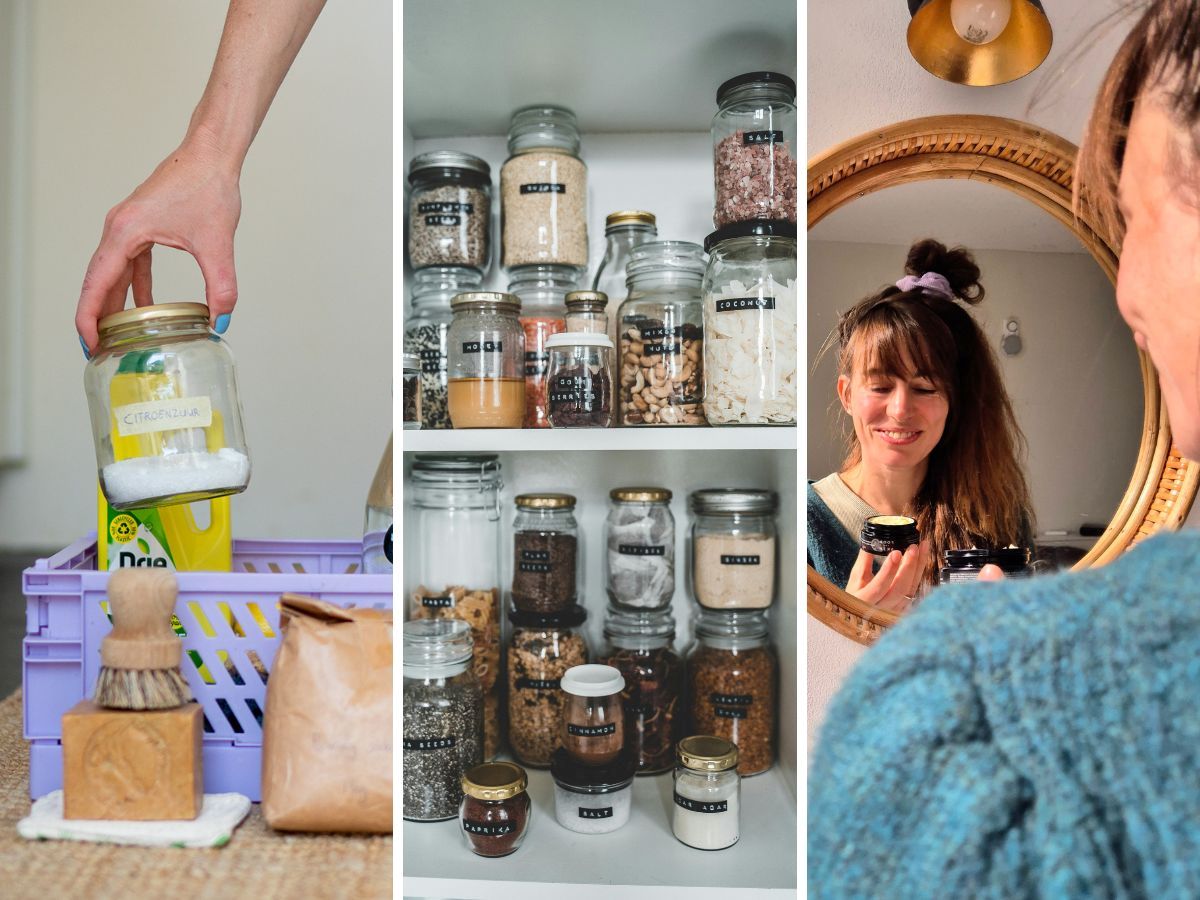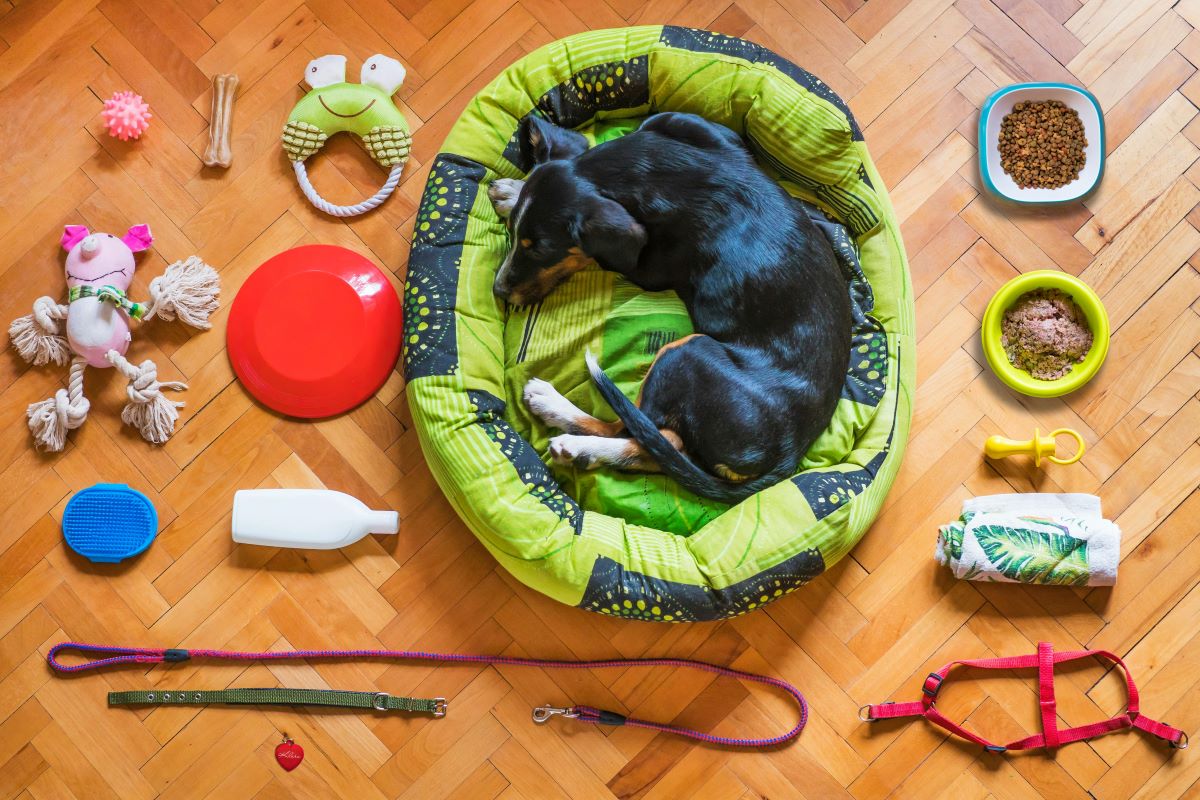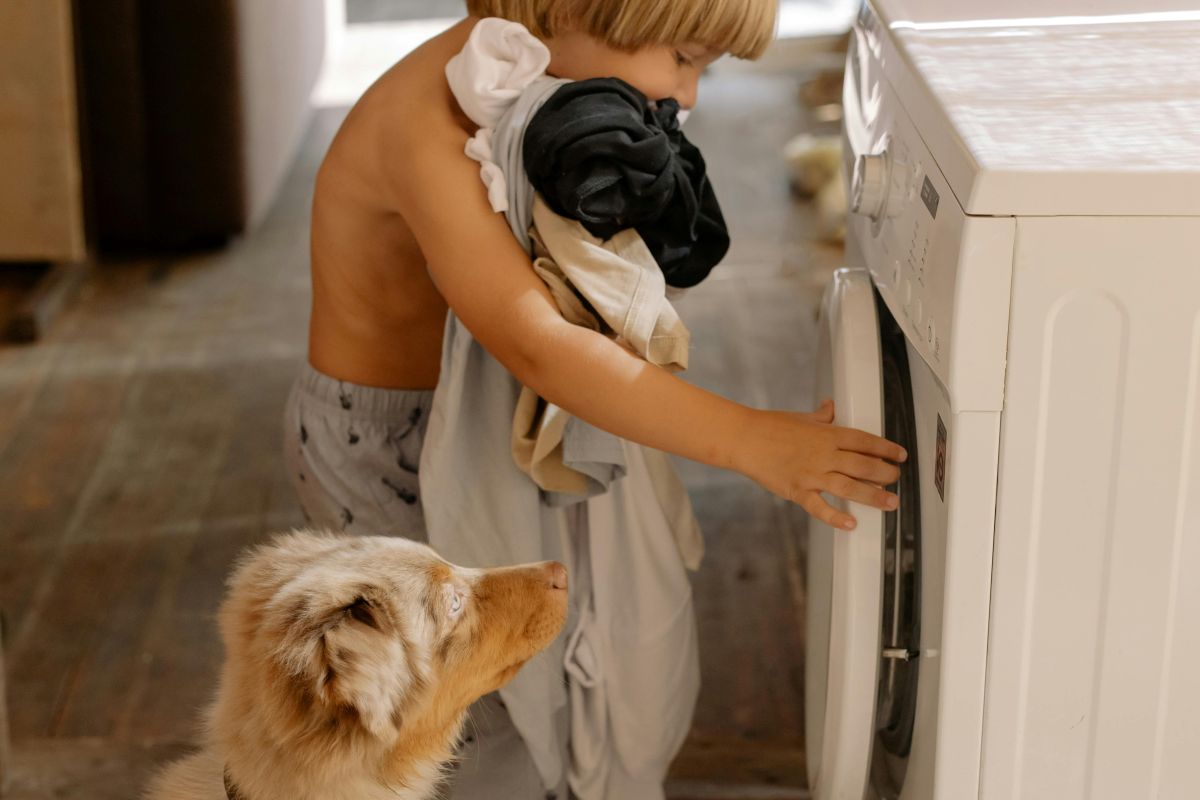What actually happens to a glass jar or bottle after you throw it in the bottle bank? And how do we ensure that those shards are turned into new glass containers? To find out how glass recycling works, Saskia followed the entire recycling process: from the bottle bank to the recycler and even deep into the glass factory. Spoiler: it is a super well-organised process, at least if we do the right thing at home, at school or at work. For instance, did you know that packaging glass can be recycled endlessly, without loss of quality?
What belongs in the bottle bank?
In partnership with Verpact
We are not doing badly in the Netherlands: 89%* of all packaging glass ends up neatly in the bottle bank. Yet over 65 million kilos are left in residual waste every year. And that is a shame, because glass that does not end up in the bottle bank is incinerated and therefore cannot be recycled. In addition, another 32 million kilos of good glass is lost in the sorting process. How is this possible? The wrong material regularly ends up in the bottle bank. Because what many people do not know is that the bottle bank is only intended for packaging glass. So broken wine glasses, oven dishes or teacups are not allowed in the bottle bank. Also, some material sometimes ends up in the bottle bank that is not glass at all. Think of KSP, which stands for ceramic, stone and porcelain. These materials look like glass, but do not melt at the same temperature and disrupt the recycling process considerably. And if there is too much of this kind of contamination in the bottle bank, it has to be taken out, in which case good glass can also be lost.
In short: the bottle bank is only for single-use glass containers, such as wine bottles, pasta sauce jars and pickle jars. The better we separate at home, the more glass can actually be recycled. And that is much needed, because glass can be reused endlessly.
*This includes the recycling of circular packaging: glass deposit bottles such as beer bottles.
From bottle bank to new bottle
To see for myself what happens to our glass jars and bottles after they have ended up in the bottle bank, I travelled to the deep south of the country. In Heijningen - close to Zeeland - I took a look at glass recycler Maltha. That is where our cullet arrives and where the real work begins: from mountains of mixed glass to pure cullet. I then drove on to Dongen, where glassworks Ardagh turns those shards into brand new glass containers. It is an impressive and well-organised process, starting with what you put in the bottle bank at home.
Visiting the glass recycler
The glass you threw in the bottle bank or collected from schools and companies is collected by collection trucks with separate compartments for white, green and brown glass. This keeps the glass already neatly separated during transport. The trucks drive to glass recycler Maltha in Heijningen, where the glass is unloaded by colour. There, a smart sorting process starts, which is fully automatic. Using sieve installations, magnets, optical sensors and air separators, disruptive materials are taken out. The goal? To leave only the right kind of glass: container glass, with no bits of ceramic, stone, porcelain, metal or plastic. So it does not matter if there is still a leftover sauce in your jar, or if the label or cap is still on it. That is all filtered out. As long as it is real packaging glass, you are fine. The result: clean, approved cullet ready for the next step. At the glass factory, they are transformed into a new apple sauce jar, an olive bottle, a pickle jar, or something completely different!





Glass recycling in pictures. Collected packaging glass from the bottle bank arrives separated and is dumped by colour. The cullet is then purified. Only packaging glass can eventually become packaging glass again. Other household waste, caps, lids, labels and wrong types of glass must be filtered out. Then all the good cullet can be made into food packaging again in a glass factory. Note: Packaging glass may be thrown in the bottle bank with label, cap, lid and food waste. Other types of glass, such as broken wine glasses, oven dishes or a broken window pane, should absolutely not be thrown in the bottle bank because it is of a different composition and has a different melting temperature.
Recycling glass: from clean cullet to new glass packaging
The clean cullet is sold to glassworks, such as Ardagh in Dongen. There they get their second life. The cullet is poured together with some new material - such as sand, soda and lime - into a huge furnace and heated to about 1,500 degrees. Then the liquid glass is blown or pressed into a mould to give it the right shape: a jar, bottle or something else made of glass. It then cools slowly and undergoes rigorous inspection. Each container is checked for cracks, dirt or weak spots. Only the best ones leave the factory. And the glass packaging that doesn't pass the quality control? Those go back into the process, because glass can be recycled endlessly. That's what's so great about this material.
Glass in the bottle bank: small effort, big difference
After this look behind the scenes, one thing is clear: glass is a fantastic material that can be reused endlessly, without any loss of quality! But then we have to collect it properly. So: only packaging glass in the bottle bank, the rest does not belong there. No oven dishes, wine glasses or stoneware crockery, but jars of pasta sauce, wine bottles and pickle jars. Lids, labels or leftover sauce? No problem, that will be taken out. By disposing of our glass properly, we ensure that more cullet is available for recycling. And the purer the glass, the more efficient and energy-efficient the process is. So we save raw materials, energy and CO2. Small effort, big difference. And it starts right at your home, at the bottle bank!
Learn more about packaging recycling at Verpact.
Find out more about recycling?
- Also see: The recycling journey of a deposit can.
- Also see: The recycling journey of a PET deposit bottle.
- Also see: the recycling journey of our gft!
Photo credits: thegreenlist.nl.












